Trail blazes are markers used to indicate key information about a hiking trail, so that you can find and follow it easily.
There are slightly different systems used around the world, but in the United States and Canada, there are seven main kinds of trail signs and markers used for marking a trail.
Knowing the common methods used for marking trails and understanding how to read trail blazes will help prevent you from getting lost or wasting time wandering around trying to find the trail when it isn’t easy to see where it goes.
🛏️FIND A HOTEL: Search now
🚘FIND THE CHEAPEST CAR RENTAL: Search Discover Cars for the best deals
✈️FIND THE CHEAPEST FLIGHTS: Search Skyscanner for the best deals
🧳GET TRAVEL INSURANCE: Get insured with Travelex before you go
📱TAKE AN AUDIO TOUR: Buy an audio tour now
No time right now to learn how to read trail markers for hiking? Pin It and save it for later:
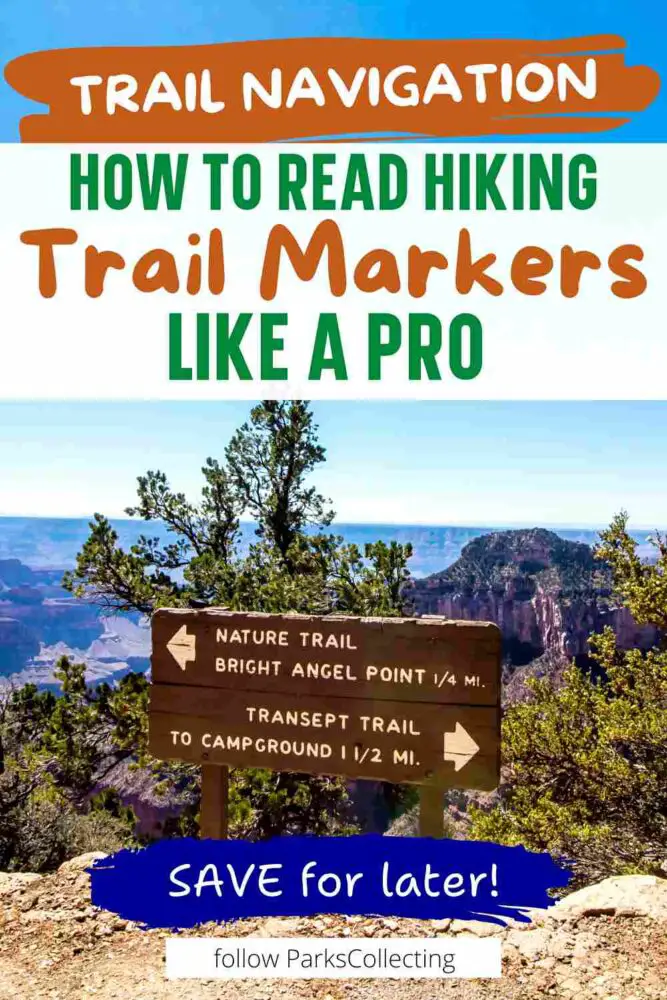
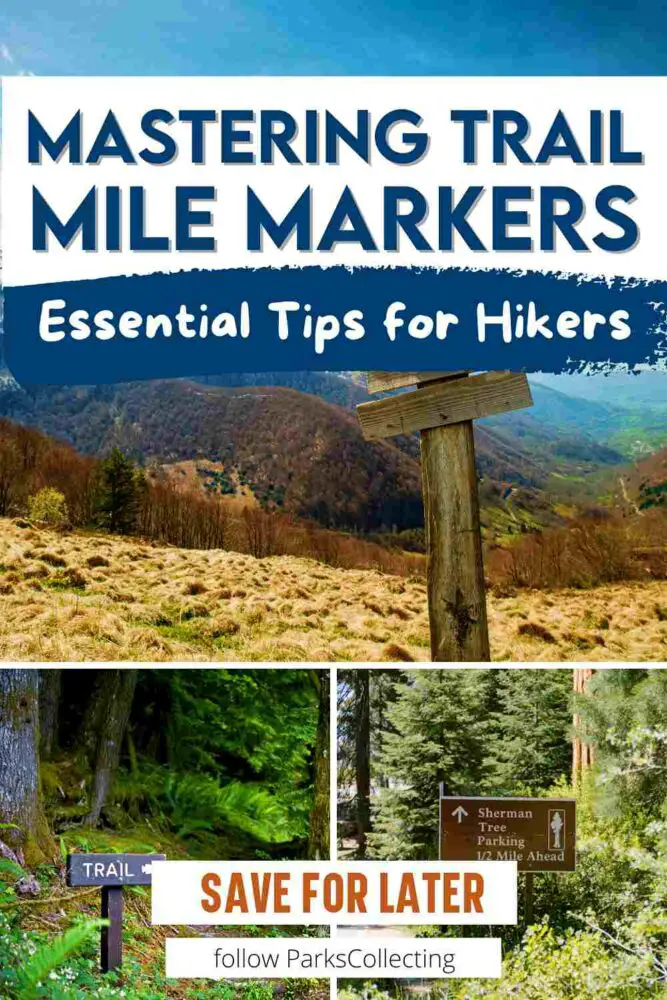
Subscribe to daily national parks planning tips, travel inspiration and trip ideas and I’ll send you a free PDF of this Guide:
How to Read Trail Markers for Hiking
Table of Contents
Types of Hiking Trail Markers
There are several types of trail signs for hiking that you may encounter.
1. Posts
These are perhaps the easiest hiking markers to see. Posts are erected with the trail or next destination marked, usually with an arrow.
Posts can also be used to indicate distance traveled (generally called trail mile markers) or distance to the final destination or end of the trail.
The downside is that if the trail isn’t well maintained, post can sometimes be knocked over or become covered in overgrowth. Mostly, though they are used in trails that are maintained.
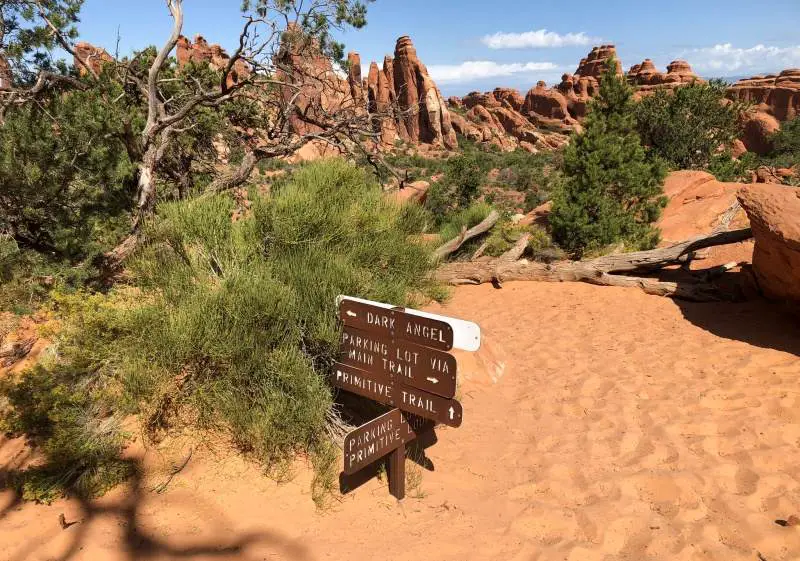
2. Paint
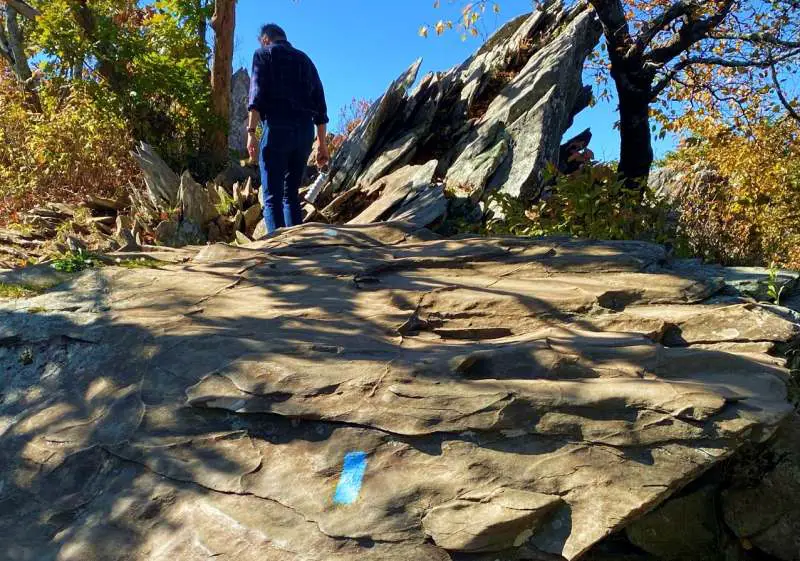
Posts and stones can be hard to see among the trees when you’re hiking in the woods, and aren’t always feasible if you’re hiking on a rock scramble, for example. In these situations, you’ll often see a small dab or rectangle of colored paint that is painted on a rock or side of a tree.
3. Affixed markers hiking signs
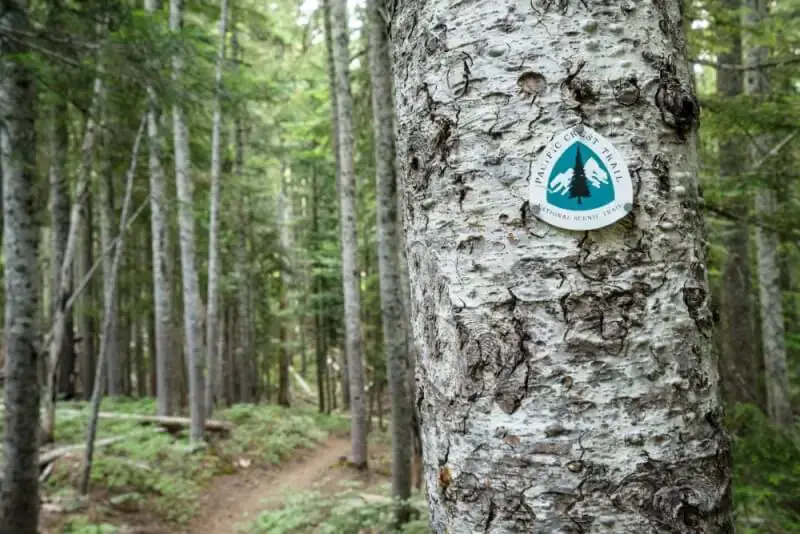
These are like paint, but these hiking trail signs are actual pieces of metal or plastic (usually) nailed to a tree trunk.
The hiking sign is clear when it’s there, but can sometimes fall down, so it’s less common than paint.
4. Carvings
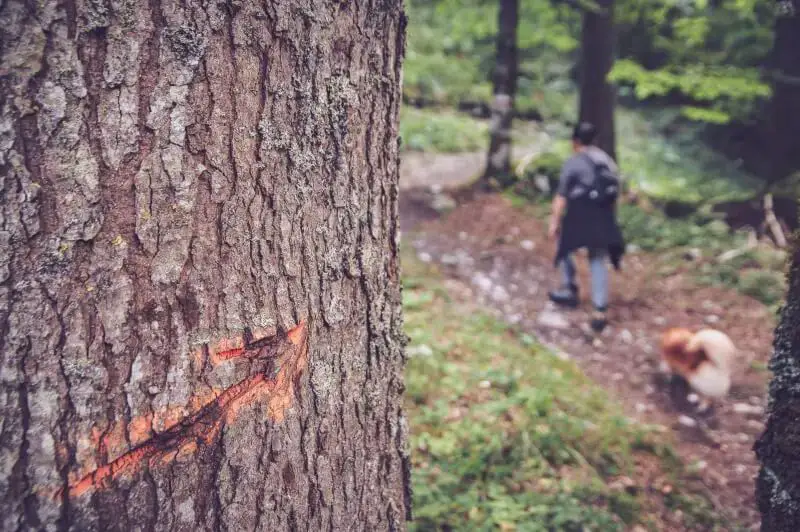
Also similar to paint, these tree trail markers are deep engravings in the side of a tree trunk. Usually an X or an arrow is carved into a tree trunk as a trail sign. They permanently damage the trees and are less easy to see than paint, so are not that common.
5. Flags/ ribbons
Also similar to paint in that they are a nature trail markers on a tree, these are plastic ribbons tied around tree trunks.
They do no harm to the tree, but can easily be torn down. Which is probably why they are not common.
6. Hiking Cairns (Stone Trail Markers)

A cairn is small pile of stones used to mark a trail. Trail cairns or rock trail markers are typically used in areas where the trail goes over rock, so the trail is not easy to see and there are no or few trees to use for painted trail markers.
Cairns are sometimes made by other hikers, but in national parks, cairn rock formation piles are often built by park rangers. Because hikers use cairns, hiking with them missing can become a problem, so you should never knock down or move a cairn.
7. Logs

In addition to rockpile trail markers, sometimes fallen logs are used to indicate the side of a trail. If you know that logs are being used, then follow along them.
Logs are used to indicate the SIDE of a trail. Don’t walk across/ over a log, as this means you are walking across the side of the trail and heading in the wrong direction.
How to Read Trail Markers for Hiking
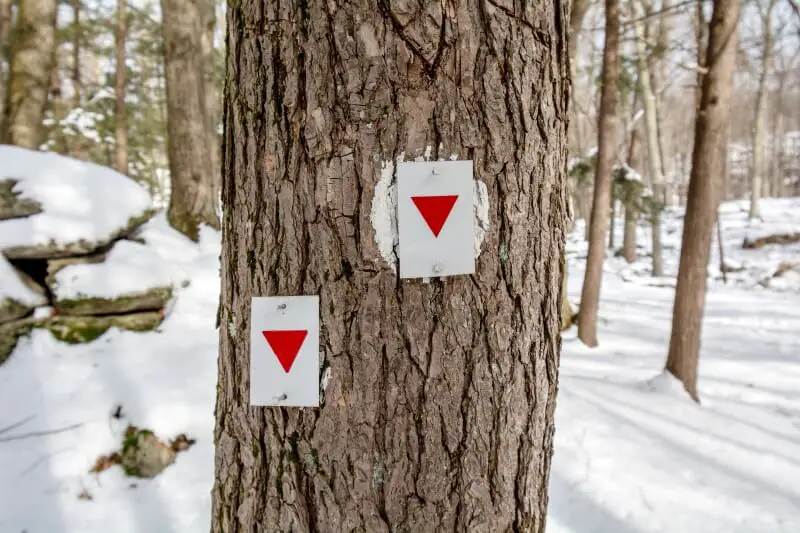
What do colors on hiking trail markers mean?
If you’re hiking in an area with multiple crisscrossing trails, each specific trail typically has its own color and/ or symbol. Know the color of your trail and then look for your hiking trail paint color to know where to go. The hiking trail color codes also help make maps with multiple trails easier to read.
Colors are also often placed in particular patterns and these have specific meanings.
How to Read Trail Blazes (paint or affixed markers)
There are different formations of tree trail markers sometimes used, and knowing what they mean is super helpful.
Straight
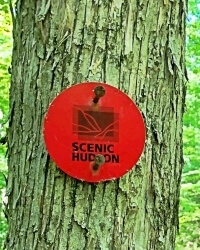
A single rectangle of paint or single marker means you are on the trail. Go straight.
Right

Two rectangles with the higher one to the right means go right. Think of a straight line going between the two rectangles and follow that direction.
Left

Two rectangles with the higher one to the left means go left. Again, if you think of a straight line going between the rectangle, it will show the direction.
Intersection

Two rectangles in a vertical line with another off to the left or right indicate a side (spur) trail going on the direction of the single rectangle. The main trail continues straight.
Start
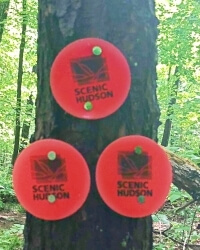
Three rectangles that form an upward arrow indicate the trail starts and is going forward.
Finish
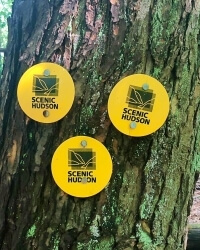
Three rectangles that form a downward arrow indicate the trail ends.
I hope this will help you find and follow trails more easily.
For other hiking resources, check out:
- Hiking for Beginners Guide with practical tips for beginner hikers
- Hiking Etiquette 101
- 18 Things to consider when choosing a hike
- Essential Gear for beginner hikers
- Additional gear for hiking
- Packing List for Day Hikes
- Essential Winter Hiking Gear
Do you have any other tips for how to read hiking trail markers? I’d love to hear about them. Join my private Facebook group National Parks Collectors and comment and let me know (you can also pick up extra planning tips, share your photos and stories with other national park lovers and more).
Are you just starting to think about taking a National Parks trip? Get Inspiration
Are you starting to plan a trip to a national park? Read my free guides
Do you need tips and additional information? Read a selection of tips for visiting US national parks
Are you ready to book your trip? Use these Planning and Booking Resources
Do you want to read a book about US national parks? Check out my Recommended Reading Lists
Subscribe to daily national parks planning tips, travel inspiration and trip ideas and I’ll send you a free PDF of this Guide:
How to Read Trail Markers for Hiking
If you liked this article about hiking blazes, posts and stones, please share the love and Pin It to your Hiking board!


About the Author
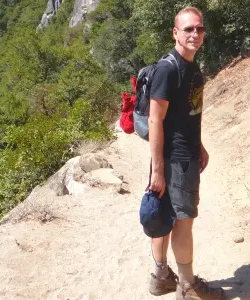
James Ian is a national park, camping and hiking expert.
He has dedicated his life to travel, visiting more than 80 countries, all 7 continents and most of the national parks in the United States. With over 35 years experience in the travel industry, James has worked on cruise ships, at resorts and hotels, and as a travel planner who’s helped hundreds of people plan successful trips to US national parks.
Based on his experience visiting our national parks multiple times, in-depth research and expertise as a travel planner, James has published detailed itineraries for many of the major national parks in the US. These itineraries, as well as in-depth park guides, and other resources will help you have your own incredible trip to US national parks without stress and hassle.
As a national park expert, James has contributed to many publications, including USA Today, Newsweek, Time Business News, Savoteur, Best Trip, and Wired.
I’m a member of the Amazon Services LLC Associates Program. As an Amazon Associate I earn from qualifying purchases.
